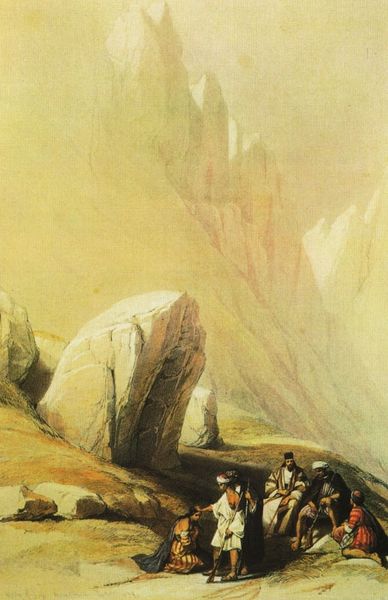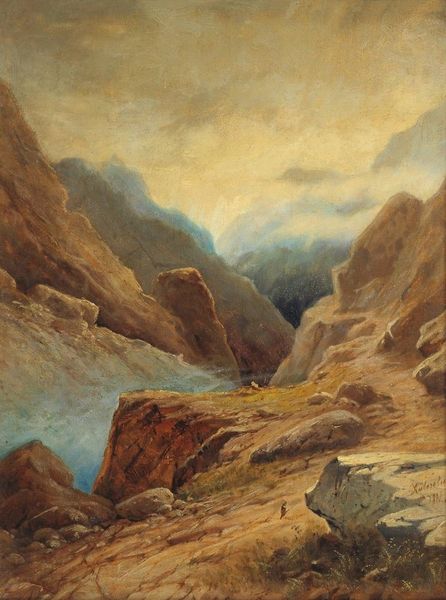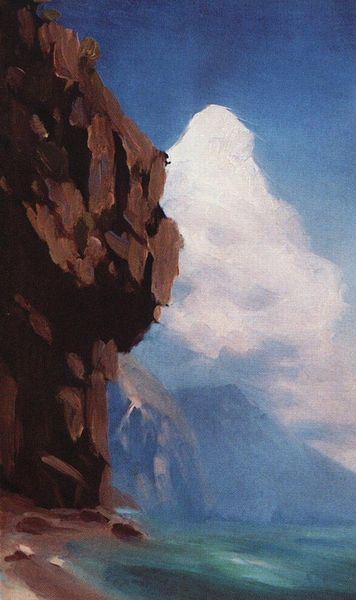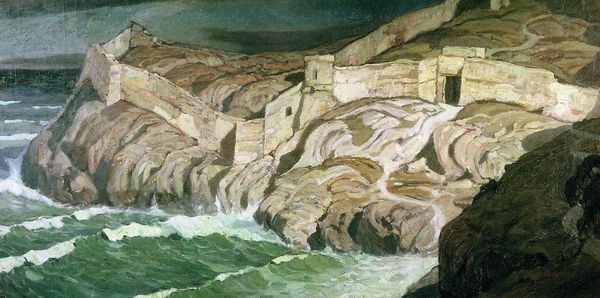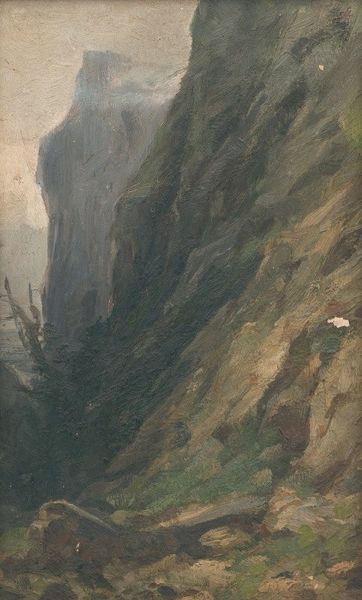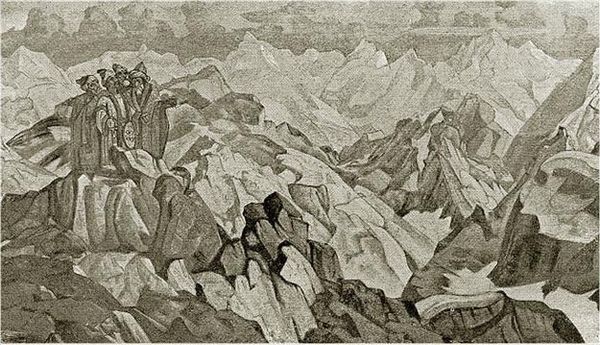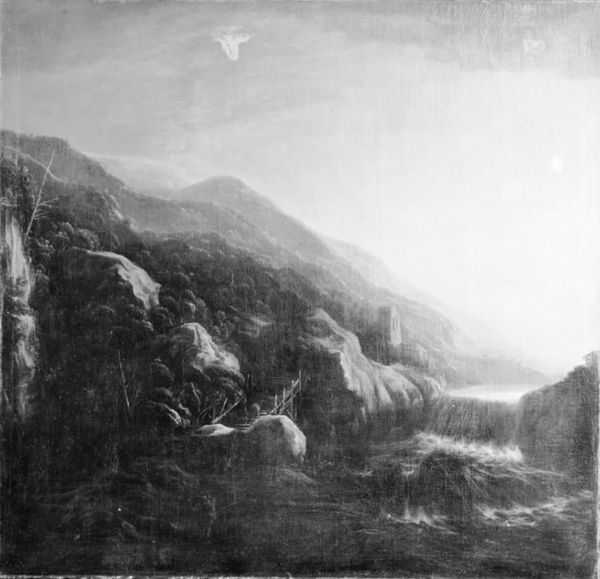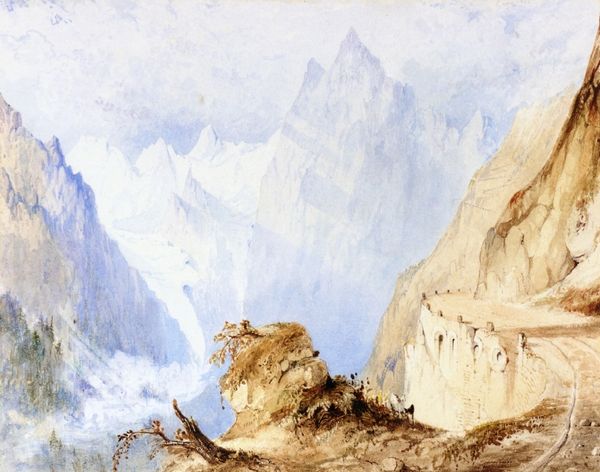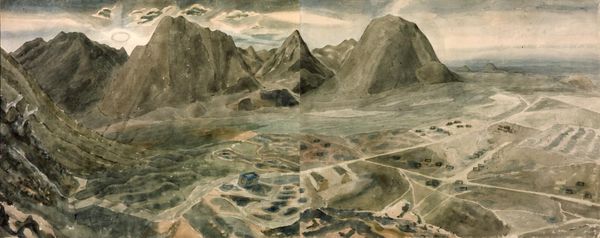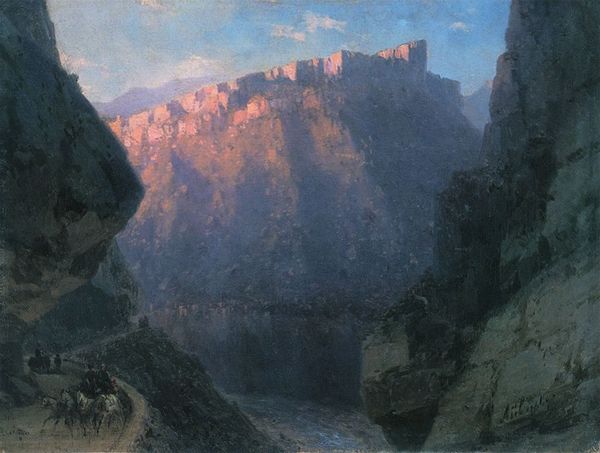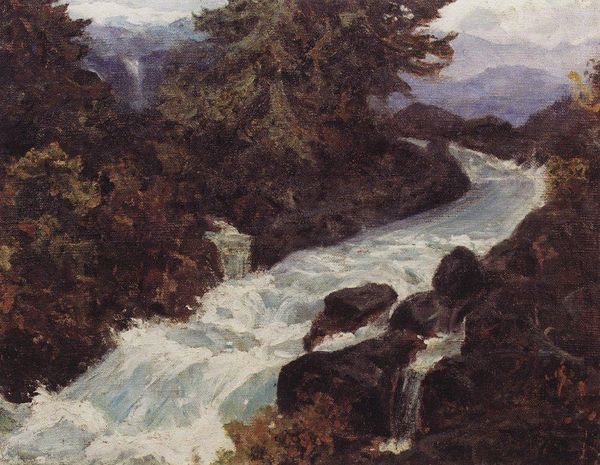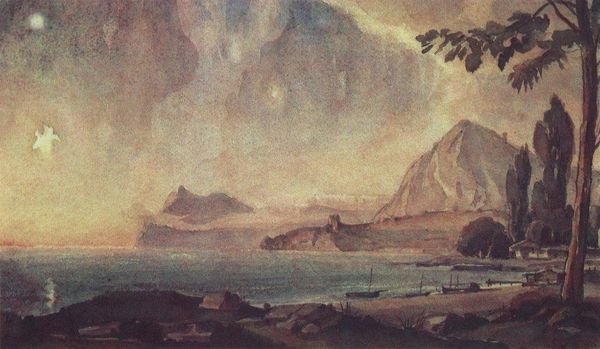
Copyright: Public domain
Curator: This watercolor, painted by Vasily Polenov in 1897, captures the austere beauty of "The Gorge of the Rocky Mountains." Editor: My initial impression is one of profound geological stillness. There's a formidable presence here, a composition structured around verticality and muted tones. Curator: Polenov, while trained in the academic style, embraced impressionistic techniques. The materiality of watercolor lends itself well to the fleeting atmospheric effects. But these were also the decades when America's West was being mythologized. What ideologies do you believe are implicit in the landscape genre, in general, here? Editor: You raise a crucial point about the socio-political dimensions of landscape art. From a purely formal perspective, however, the light in this piece is masterfully handled. See how it drapes across the rock faces, creating texture and volume using chiaroscuro? The artist used depth to generate contrast between shadowed crevices and surfaces that catch the indirect light. Curator: Yes, that manipulation of light and shadow serves a symbolic purpose. Polenov, having traveled widely, encountered diverse cultures. These paintings became visual records of imperial encounters, and the subjugation of lands through landscape ownership. Are there any indicators of humanity’s impact on the location? Is the gorge untouched by civilization, or simply, absent from our current perspective? Editor: While the overt presence of human activity is absent, the composition implies an invitation of exploration. The layering creates a strong focal point at the distance, thus engaging us, and not erasing. This beckons the eye to travel deeper into the vista. In effect, we observe art, by being subtly engaged to travel to new landscapes. Curator: Your semiotic reading enriches my understanding. For Polenov, his paintings of America became associated with adventure, colonization, and power. It adds another dimension of viewing pleasure that one might want to carry. Editor: Indeed, viewing it this way, enriches the conversation around landscape art and allows an expanded way to understanding not just formal, but cultural structures of engagement.
Comments
No comments
Be the first to comment and join the conversation on the ultimate creative platform.
